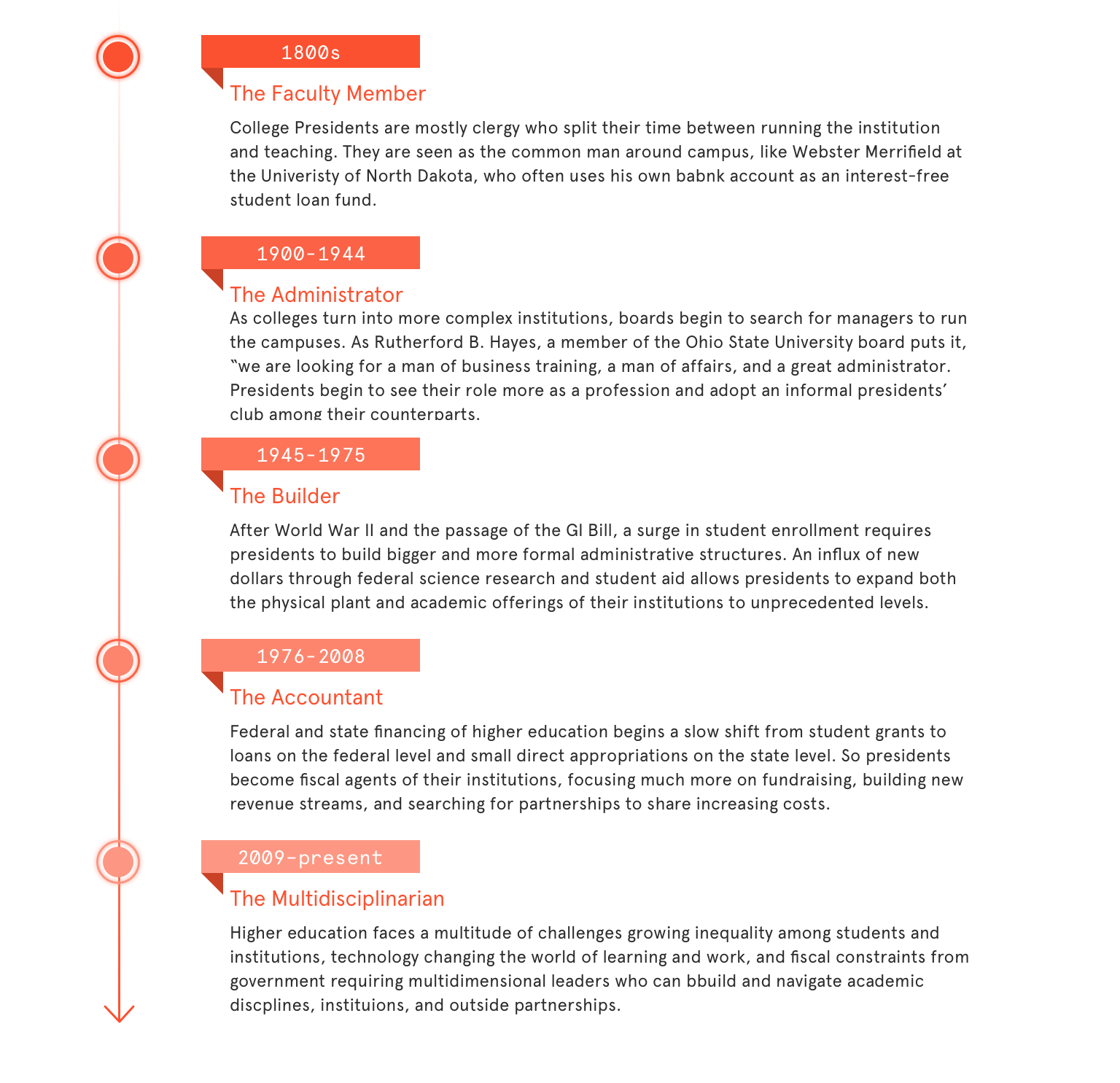This is the first in a three-part series about the evolution of the role of the college president to that of a marketing expert. Find the rest of the series here: Part 2 | Part 3
In 2018, the departing chancellor of the University of Texas system, William H. McRaven, declared that being the president of a college or university was “the toughest job in the nation.” And that was before COVID-19. It’s easy to imagine the former military commander feeling stronger about that statement after 2020 and the ongoing pandemic, with its subsequent health crises, logistical nightmares, and steep financial losses for colleges and universities.
2020-21 was a “trial by fire” for new presidents, and the most challenging year for many retiring presidents. Most conversations and headlines since March of 2020 have focused on the challenges to course delivery and institutional finances, but there is another area of looming concern for colleges and universities, wholly unrelated to the pandemic: the leadership crisis at the presidential level.
Even before the pandemic hit, tenures for college presidents were getting shorter, according to the American Council on Education’s (ACE) 2017 survey of college presidents, and the projected turnover at the presidential level in the next several years was high. That wouldn’t necessarily warrant concern, except that the traditional pipeline of provosts or chief academic officers – traditional stepping stones to the presidency – are opting not to pursue that next step. For over a decade, this trend of provosts not pursuing presidencies has manifested, and we may soon see its fallout.
>>READ MORE: The modern intersection of politics in higher education
The Dwindling Pipeline to the Presidency
In 2008, ACE surveyed 1,715 chief academic officers and found that only 30 percent of those surveyed aspired to the college presidency. Subsequent studies showed that one reason for the low aspirational rate among chief academic officers was they felt that very few responsibilities of their positions overlapped with those of a college president.








